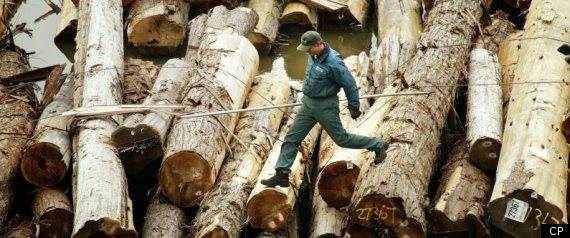I like peace and deals, in general, as opposed to litigation…I like the optimism of this article from the Vancouver Sun. Thanks to Craig Rawlings, Forest Business Network, for this! Note the quote below: “we’re learning to work together rather than fight over litigation.”
Here’s an excerpt:
Although there’s little doubt U.S. agitators will continue to pursue these kinds of actions, the threat to U.S. producers from Canadian lumber exports is not what it was. The recession and U.S. housing crisis altered the dynamics of the market, as both lumber production and prices fell. Canada’s share of the U.S. market dropped to barely 25 per cent — exports of softwood lumber fell from $9.6 billion in 2004 to $2.6 billion in 2009. Many analysts now expect Canada’s average market share will not return to previous levels but rather hover around 27 per cent for years to come.
As Canada’s exports of softwood lumber to the U.S. declined, so too did Canada’s dependence on the U.S. market. In 2004, 81.1 per cent of Canada’s lumber exports were destined for the U.S; by 2010, the proportion was 58.7 per cent.
What happened is that Canada — and, for the most part, we’re talking about British Columbia, which accounts for nearly 60 per cent of Canada’s lumber exports — found a voracious new market in China.
Since 2003, B.C.’s softwood lumber exports to China have risen by 1,500 per cent; and the value of exports was up 60 per cent in 2011 alone, surpassing the $1-billion mark for the first time. Lumber sales to China have grown from $900 million in 2006 to $3.2 billion in 2011, representing growth in the share of exports from 6.6 per cent to 28.8 per cent.
John Allan, president of the B.C. Lumber Trade Council, explained that China is drawn by the attributes of wood — namely seismic performance, carbon sequestration and energy efficiency, adding that B.C. producers are unlikely to abandon the Chinese market no matter what happens south of the border.
“We learned a lesson in diversifying our markets to China and ignore that lesson at our peril,” he said. “We’ll need to keep an eye on the U.S. recovery and housing starts and that will dictate where negotiations go toward a new agreement.”
Another sea-change that will affect future negotiations is the warming relationship between Canadian and U.S. producers. They have found common cause in the promotion of wood and have joined forces to market it globally. The so-called checkoff system, developed over the last three years by the Binational Softwood Council (established by the Canadian and U.S. governments under the Softwood Lumber Agreement) and overseen by the U.S. Department of Agriculture, imposes a charge on all lumber producers to fund a marketing scheme to promote the use of wood. “We’re learning how to work together versus fighting over litigation,” Allan said.
The reduced threat from exports, more diversified markets and a new spirit of cooperation will change the tenor of negotiations and their outcome.
It may even come to pass that no treaty with restrictions, quotas, tariffs and taxes will be necessary. Perhaps the risks and rewards of free trade will finally be extended to lumber, not only giving Canada access to the U.S. market but spreading the benefits of building with wood to the rest of the world.
